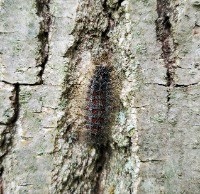Street Trees and Tree Care

Street trees are an important part of the City's streetscape. Trees add value to your property and provide beneficial services to us like reducing runoff and improving air quality. They also benefit our mental health and can even reduce stress and anxiety.
Tree Ownership
Oshawa Forestry services plant and maintain City trees on boulevards, parks and green spaces.
To determine if a tree is located on your property or on City property, review the property lines on your home survey. Generally, City trees are planted within two metres of the curb or within one and a half metres from the sidewalk on the boulevard side.
Private trees
If you have an issue with a tree within your property lines, please contact a qualified tree service company.
Forestry requests
Tree pruning
Proper care of our street trees helps maintain the tree's structure, maintain good visibility and prevent conflicts with the built environment. Street tree maintenance is completed on a 10-year cycle or by request.
Request tree pruning
Tree removal
All trees are inspected and assessed by a certified Arborist before a decision is made to remove them. We remove trees affected by pests and disease, or ones which pose a safety risk to residents.
Tree planting
We are committed to growing our tree canopy. You can request a new tree for your boulevard and Forestry staff will inspect and determine if it is possible. All trees removed on City property go on the stumping and planting list to be replaced.
Stump removal
When we remove a tree, it will be cut low to the ground and placed on our stump and replace list. Occasionally, a ‘peg' will be left standing to be removed at a later date with other Forestry equipment.
During the stump removal process, the stump will be grinded out and the area left with dirt and wood fibre present on the affected area. This will be left until the tree is planted and the affected area is restored with fresh soil and grass seed.
Pest management and tree disease
We actively monitor and assess our tree canopy health but we do not spray for any pests or diseases.
| Emerald ash borer (E.A.B.) | ||||||||||
|
The emerald ash borer is an invasive beetle that feeds on all ash (Fraxinus) species in Ontario, including green, red, white, black and blue ash, as well as some non-native species such as European black ash (Fraxinus excelsior). Mountain ash is not a true ash tree and is not effected by the beetle. The metallic green beetle emerges in early summer and will grow to be 8.5 to 13.5 mm long with a flattened head, large black compound eyes on the sides of the head, and short antennae. They lay 60 to 90 eggs one at a time in bark crevices on ash trees. Once the eggs hatch and become larvae, they tunnel under the bark to feed. These tunnels stop the flow of water and nutrients causing, the ash tree to die.
Additional E.A.B. resources |
||||||||||
| Japanese Beetle | ||||||||||
|
Japanese Beetles are Leaf Skeletonizers, which eat the soft outer tissues of foliage while leaving behind a skeletal network of veins. When a tree is skeletonized, it does not mean it has died. A tree will often respond by producing new leaves by the end of the season. Japanese beetle is not a serious tree health concern unless infestations occur repeatedly and severely on the same tree. The City will not put out traps for this insect. Although the pheromone and floral lures sold with the traps are very effective and attract many beetles each day, the traps attract more beetles than are caught. This results in other species of trees or plants being at risk of suffering damage from this insect. |
||||||||||
| Spongy moth | ||||||||||
|
||||||||||
| Tar Spot | ||||||||||
|
Tar spot is a fungal disease that does not harm the tree and only affects the appearance of the leaves. It begins as small yellow spots that become larger and turn black as the season progresses. To reduce or prevent this, rake up leaves and dispose of them immediately instead of placing them in a compost pile. The disease can over-winter on the ground in fallen leaves and is very hard to get completely remove from an area. |
||||||||||
| Oak Wilt | ||||||||||
|
Oak Wilt was recently detected in Ontario and it is important to be aware of the signs and symptoms of the disease. It is a fungal disease spread naturally through root systems or by beetles carrying the fungal spores. Oak wilt is not a threat to humans or wildlife. The City of Oshawa is following the recommendation of the C.F.I.A. (Canadian Food Inspection Agency) and I.S.A.O. (International Society of Arboriculture Ontario) and will not be pruning any Oak species from April to November as a precaution. IF pruning must be done outside this time frame, cuts will be painted with wound dressing. What can you do?
For more details and information on the signs and symptoms of this disease please visit any of the following links: |





